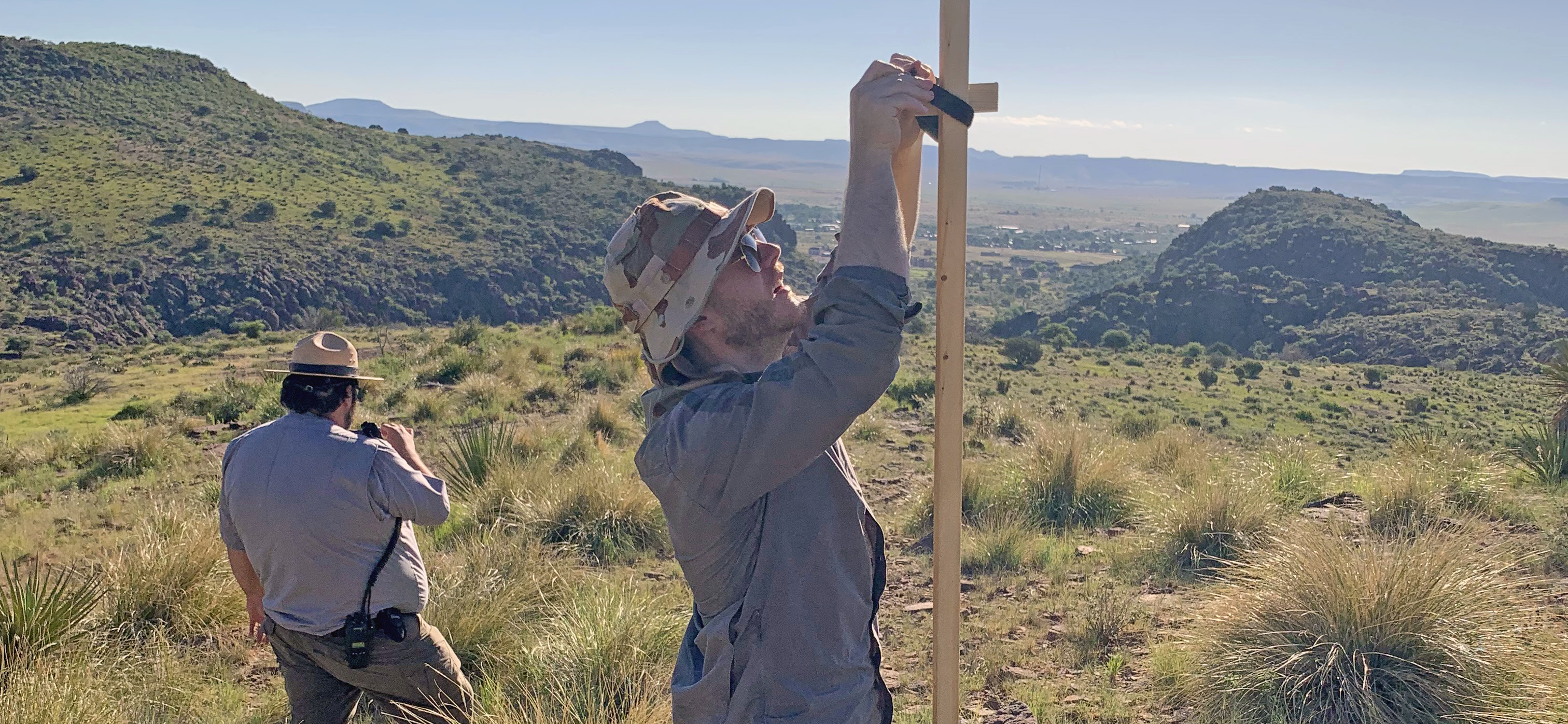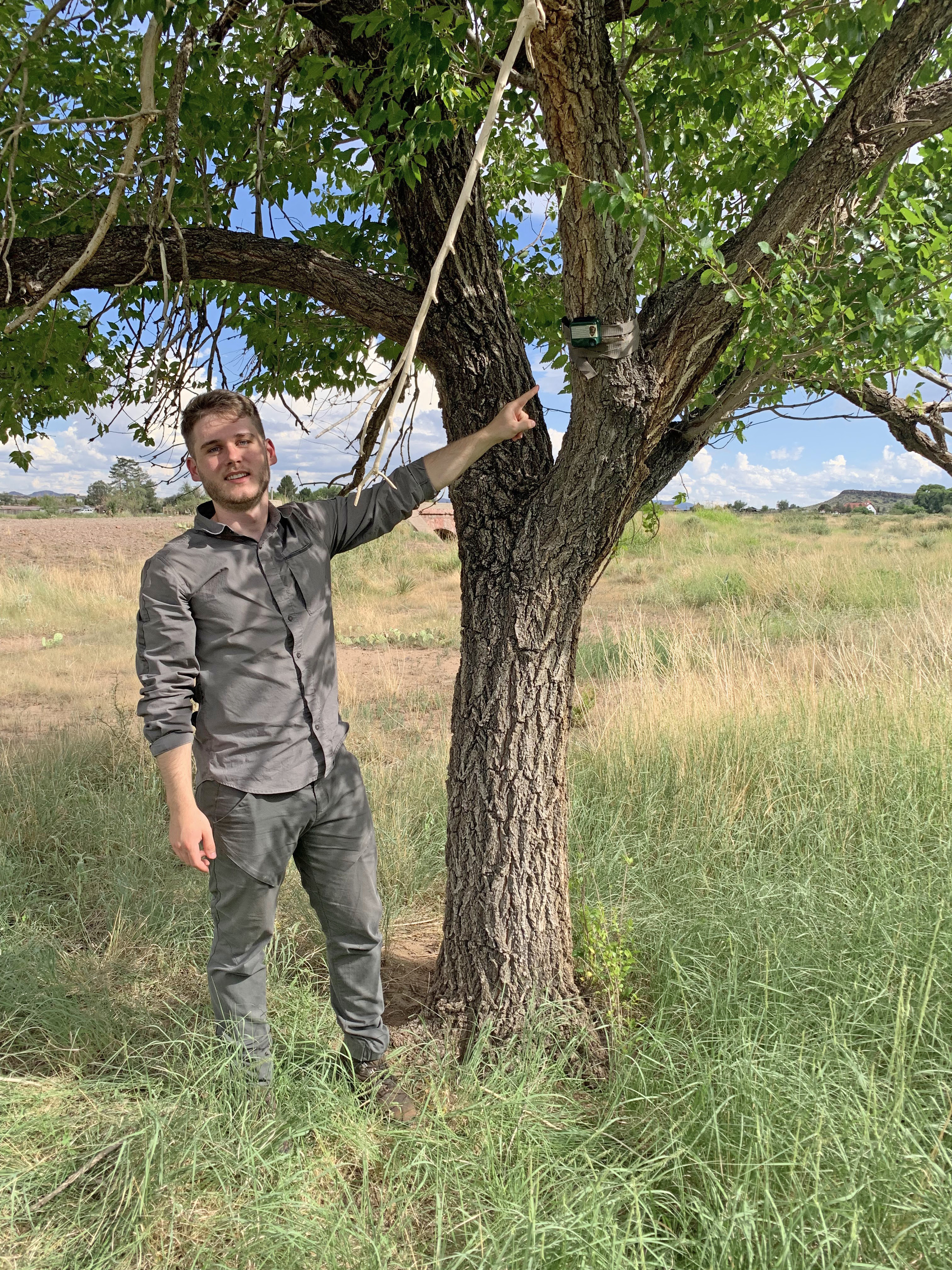Last updated: August 8, 2022
Article
IVIP Spotlight: Wesley Reverdy
 Wesley Reverdy is working for the Sonoran Desert and Chihuahuan Desert networks.
Wesley Reverdy is working for the Sonoran Desert and Chihuahuan Desert networks.Interns and volunteers play a variety of essential roles at the Sonoran Desert Network and Desert Research Learning Center. Over the years, we have welcomed many international volunteers through the National Park Service's International Volunteers in Parks (IVIP) program. Our IVIPs gain field experience and complete independent projects to fulfill academic requirements. On-site housing and travel stipends may be available. Have a skill to share? Visit our website for more information.
Where are you from?
I grew up in a small town called Thionville, located in an old industrial basin in the Northeast of France, within a region called the Lorraine. Later, I moved within the same region to a tiny village, located in the middle of a low- to mid-mountains range called the Vosges.
Are you currently a student? Which degree are you working toward?
I’m currently finishing my last year of study in a master’s degree dealing with ecosystems conservatory management and restoration. Among a lot of different aspects of conservatory ecology, I’m mostly interested in wildlife monitoring and management. After my studies, my professional goal will be to work on that kind of subject within a great natural protected area in France or elsewhere. I’m studying at the University of Lorraine, which is the only university in my region (we only have one university in each region in France). It is mostly based in a big city of the Northeast of France called Nancy.
How long have you been with SODN, and what’s the nature of the work you’re doing?
I’m working at SODN as an International Volunteer In Parks intern, in the context of my end-of-study final internship. I’ve been here for four months now and I only have one month and a half left here (too bad!). So, in the end, it will be a five months and a half-long stay here. I’m living in one of the apartments at the DRLC. What a cool place to live for five months! So quiet, a lot of wildlife around, awesome sunsets every evening, and an amazing night sky!
I’m working for both SODN and the Chihuahuan Desert Network (CHDN), on two different projects dealing with wildlife monitoring. For SODN, I’ve helped with fieldwork related to the mammals monitoring project using camera traps. I’ve worked with other members of the crew to deploy and retrieve camera traps at Organ Pipe Cactus National Monument and Chiricahua National Monument. In addition, I’ve helped the team with data processing by identifying species on a subset of photos taken during the deployment at Chiricahua National Monument.
For CHDN, I’m trying to determine the best way to establish a new birds and bats monitoring protocol using passive acoustic recorders deployed in the field during a long period of time. The recorders allow more accurate results than the traditional point-count method. Thanks to their low battery consumption, we can let them record in the field for more than a month at a time. Also, when deployed for a long period, these acoustic devices are less intrusive than regular human visits to each plot.
 Acoustic monitors were deployed on trees at Fort Davis NHS.
Acoustic monitors were deployed on trees at Fort Davis NHS.The recorders make it easy for bird experts to recognize species for a couple of reasons. First, it’s possible to listen to vocalizations several times. Also, the software can automatically recognize vocalizations and assess their species. This saves a lot of time in data processing, which is important because final data amounts can sometimes exceed 1,000 vocalizations per day. This new kind of monitoring may also be more cost-efficient than traditional point-counts.
To explore this method, I had to test recording units and create proper SOPs to standardize their deployment and establish the settings used to record species of interest. Another part of this job was also to find a way to automatize, as much as possible, the data processing part. That means finding the best software to automatically recognize species according to the vocalizations recorded by devices in the field. With the help of CHDN team, we conducted a first real deployment at Fort Davis National Historic Site (Texas) in late July. After the retrieval at the end of August, we will be able to get one month of recording at different spots in the park and try to assess the efficiency of that kind of deployment for an occupancy analysis.
What do you like to do outside of school/work?
I like to do a bunch of different things. Most of the time, I like to watch or do sport, (especially soccer) and hike within beautiful natural parks (such a lot of great opportunities here in the USA!). Otherwise, when I’m at home, I really like to repair old cars, to play some music, or to watch a good TV show.
What appealed to you about SODN’s IVIP position?
In Europe, the National Park Service is very well known as the greatest government organization working on nature preservation. That’s why it has always been my dream to work and learn as an intern within the NPS, and my end-of-study internship was the perfect opportunity to try to make that dream come true. The IVIP position shared between SODN and CHDN was perfect for me, as it deals with two wildlife monitoring projects and is exactly the kind of subject that I want to work on during my future professional career. It is the best way for me to gain more knowledge and experience about that topic!
